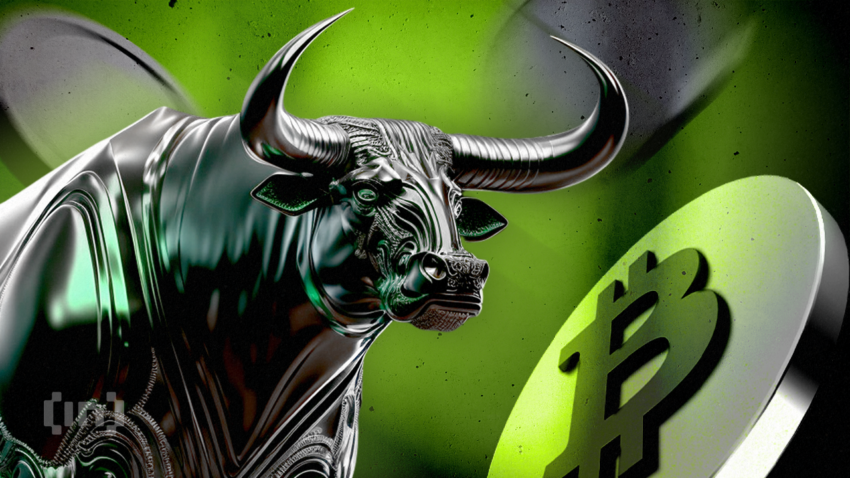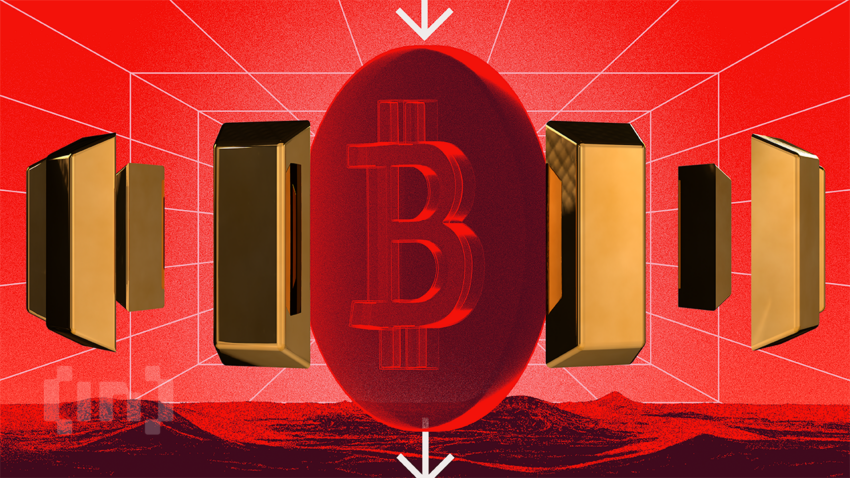In the world of finance today, many investors wrestle with the challenge of deciding between traditional assets and digital assets like Bitcoin.
This dilemma prompts us to examine the time-tested stability of gold and the disruptive potential of Bitcoin, as we seek to understand which investment might be the wiser choice over a ten-year period.
The Time-Tested Versus the Digital Disruptor
Imagine a scenario where you receive $1.7 billion worth of gold or Bitcoin, but you must hold onto the investment for a decade. This hypothetical situation raises the question: which asset would be a wiser choice? By exploring the history, benefits, and drawbacks of both gold and Bitcoin, we aim to provide a balanced perspective on this fascinating conundrum.
A Golden History: Stability and Tradition
Gold has been a store of value for millennia, often representing wealth, power, and stability. The precious metal has weathered countless economic storms, from the collapse of ancient empires to modern financial crises, consistently retaining its value over time.
Inflation Hedge and Tangibility
One of gold’s key advantages is its role as an inflation hedge. As fiat currencies lose purchasing power due to inflation, gold tends to maintain or even appreciate in value. For instance, during the 1970s, a period marked by high inflation, gold prices surged as investors sought protection from eroding purchasing power.
Additionally, the physical nature of gold offers a sense of security and tangibility that digital assets lack, appealing to those who value tangible wealth.
However, gold comes with its share of drawbacks. The need for secure storage and transportation can be costly and logistically challenging, especially for large quantities. High-profile heists, like the 1983 Brink’s-Mat robbery in London, where thieves stole gold worth £26 million, highlight the risks associated with storing and transporting the precious metal.
Gold: We Can Always Find More vs. Bitcoin: Limited Supply
The issue of supply plays a significant role when comparing gold and Bitcoin. While gold reserves can continually expand as new deposits are discovered or through extraterrestrial sources, Bitcoin’s supply is capped at 21 million coins. This fundamental difference in supply dynamics has implications for the long-term value and scarcity of both assets.
The Ever-Expanding Gold Supply
Gold deposits are still being discovered and mined, with an estimated 171,300 tons of gold already extracted and an additional 52,000 tons of underground reserves. The potential for even more discoveries, such as the Witwatersrand Basin in South Africa, which alone has produced over 50,000 tons of gold, highlights the fact that the gold supply can continue to grow.
Moreover, the prospect of mining asteroids for precious metals, including gold, has gained attention in recent years. Companies like Planetary Resources and Deep Space Industries are exploring the feasibility of asteroid mining, which could potentially unlock vast quantities of gold and other valuable resources.
Bitcoin’s Finite Supply: A Digital Scarcity
In contrast, Bitcoin’s supply is strictly limited to 21 million coins, established by its creator Satoshi Nakamoto. As of 2021, approximately 18.7 million bitcoins have been mined, with the last expected to be mined around 2140. This finite supply creates a digital scarcity, which has been a driving factor in the currency’s meteoric rise in value.
Bitcoin’s limited supply creates a deflationary aspect, contrasting with fiat currencies’ inflationary nature. As Bitcoin supply nears its cap, demand could grow, possibly boosting its value over time.
Understanding the supply dynamics of gold and Bitcoin is essential when assessing their long-term investment potential. Gold’s ever-expanding supply may dilute its value over time, while Bitcoin’s finite supply could contribute to its growing worth as a scarce digital asset.
Bitcoin: The Digital Gold Rush
Bitcoin, a cryptocurrency created in 2009 by an anonymous individual or group known as Satoshi Nakamoto, has emerged as a revolutionary digital asset. Its meteoric rise in value, from mere cents to tens of thousands of dollars per coin, has made it a popular investment option.
High Returns and Decentralization
Bitcoin’s most attractive feature is its potential for high returns. Early adopters who invested in the cryptocurrency have reaped staggering profits. For example, the Winklevoss twins, famous for their involvement in Facebook’s early days, became billionaires through their Bitcoin investments. The decentralized nature of the cryptocurrency also appeals to those seeking alternatives to traditional banking, as it eliminates intermediaries and fosters greater financial autonomy.
Regulatory Concerns and Volatility
On the downside, Bitcoin faces regulatory uncertainties that could impact its future value. Governments worldwide have adopted varying stances on cryptocurrencies, ranging from outright bans to embracing the technology. Additionally, its notorious price volatility poses a risk for investors, with the potential for significant losses. The 2017-2018 Bitcoin bubble, where prices soared to nearly $20,000 before plummeting, serves as a cautionary tale for those considering the digital asset.

Weighing the Risks: The Decade-Long Investment Dilemma
Investors must carefully weigh the risks associated with each asset to determine which one suits their investment strategy for the next ten years.
Assessing Bitcoin’s Potential
For those willing to embrace the potential of digital assets, Bitcoin offers an opportunity for potentially high returns. However, investors must also consider the regulatory uncertainties and market volatility that come with the territory. Analyzing trends and developments in the cryptocurrency market, such as the growing adoption of Bitcoin as a payment method by companies like Tesla and PayPal, can provide insights into its future prospects.
Gold’s Steady Appeal
For investors who prioritize stability, gold’s track record as a store of value and inflation hedge may be more appealing. Despite the storage and transportation challenges, gold’s tangible nature and historical significance offer a sense of security. Examining gold’s performance during economic downturns, such as the 2008 financial crisis, can help assess its resilience in the face of adversity.
A Personal Choice: Weighing Pros and Cons
Ultimately, the choice between gold and Bitcoin depends on individual preferences and risk tolerance. As the financial landscape continues to evolve, investors must remain agile and informed to make sound decisions for their portfolios.
Diversification: The Middle Ground
As the saying goes, “don’t put all your eggs in one basket.” One strategy for investors may be to diversify their portfolio by allocating a portion to both gold and Bitcoin. This approach could potentially mitigate risks associated with market volatility and regulatory uncertainties while still capturing the potential rewards of each asset.
By investing in both gold and Bitcoin, investors can balance the stability of gold with the high-return potential and decentralization of Bitcoin. This strategy enables individuals to participate in the growth of digital assets while maintaining exposure to the enduring value of gold.
Adapting to Market Conditions
As the global economy and financial markets evolve, investors must continually reassess strategies and adapt to new opportunities and challenges. A diversified approach, including both gold and Bitcoin, allows for greater flexibility and resilience in an ever-changing landscape.
The Road Ahead: Embracing Uncertainty
The billion-dollar dilemma of choosing between gold and Bitcoin highlights the uncertainties that permeate the world of finance. While no one can predict the future, investors can navigate these uncertainties by remaining informed, adaptable, and open to change.
The next decade may bring financial innovations and disruptions due to new technologies and consumer demands. With growing digitalization, investors should stay informed and adapt strategies accordingly.
Gold and Bitcoin histories teach investors about balancing stability and new opportunities. Weighing pros and cons helps make informed decisions aligned with financial goals and risk tolerance.
Striking a Balance for Long-Term Success
Ultimately, choosing gold or Bitcoin is personal, influenced by one’s situation, preferences, and outlook. By embracing change, uncertainty, and staying informed, investors can succeed in the complex financial world.
As the financial landscape evolves, investors should adapt and make informed decisions based on goals and risk tolerance. Diversifying portfolios helps embrace traditional assets like gold and digital alternatives like Bitcoin, ensuring success in an uncertain future.
Disclaimer
Following the Trust Project guidelines, this feature article presents opinions and perspectives from industry experts or individuals. BeInCrypto is dedicated to transparent reporting, but the views expressed in this article do not necessarily reflect those of BeInCrypto or its staff. Readers should verify information independently and consult with a professional before making decisions based on this content. Please note that our Terms and Conditions, Privacy Policy, and Disclaimers have been updated.


